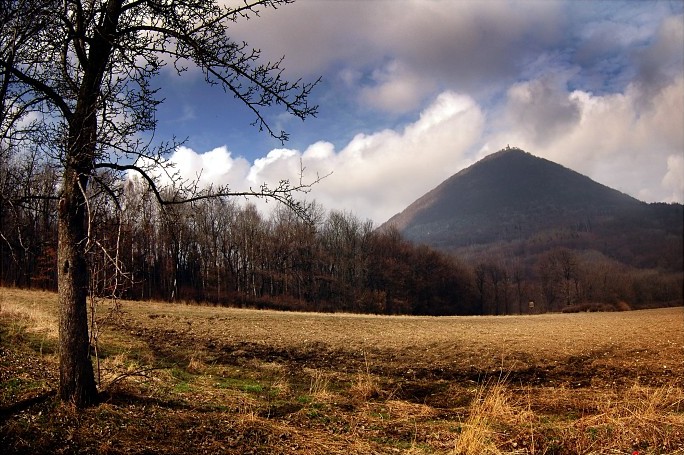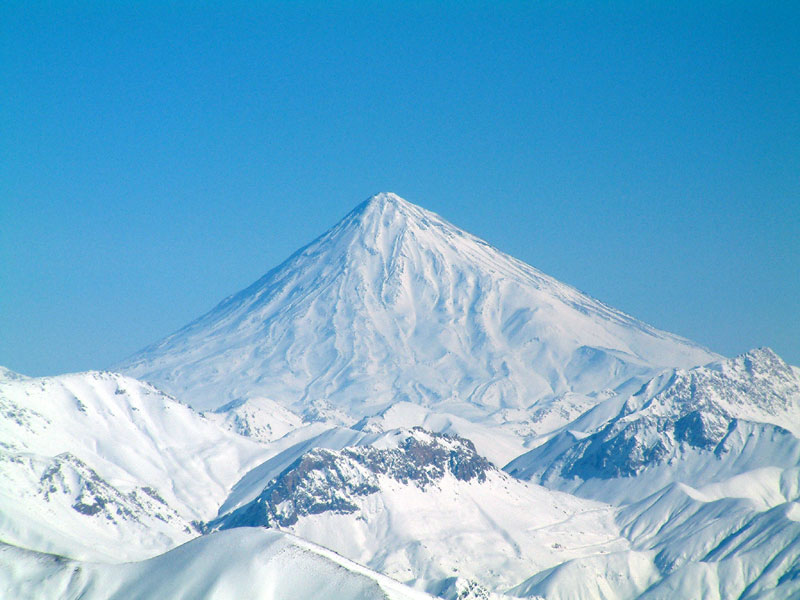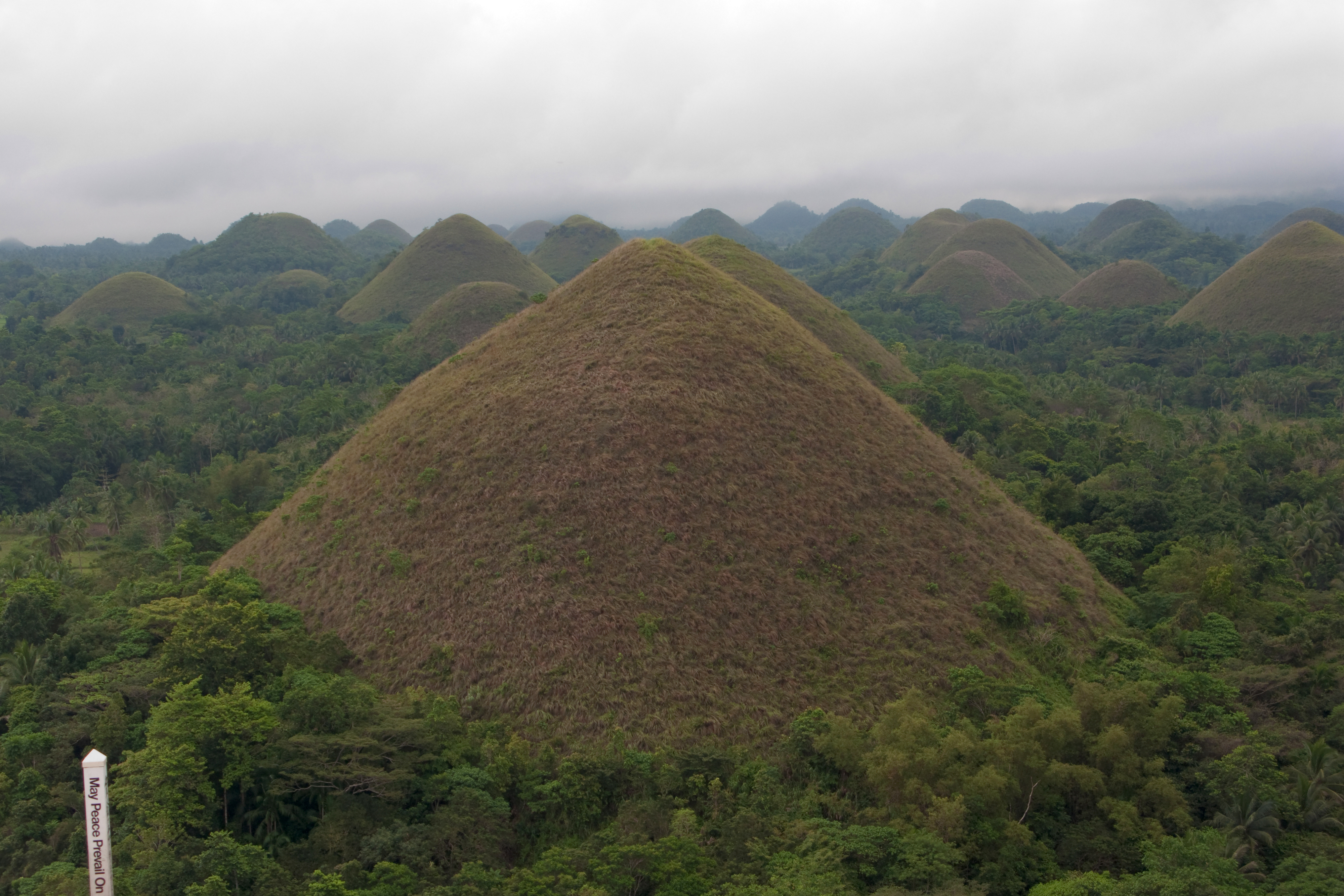Conical hill on:
[Wikipedia]
[Google]
[Amazon]
 A conical hill (also cone or conical mountain) is a landform with a distinctly conical shape. It is usually isolated or rises above other surrounding foothills, and is often of
A conical hill (also cone or conical mountain) is a landform with a distinctly conical shape. It is usually isolated or rises above other surrounding foothills, and is often of
The first systematic geological mapping of the

 All stratovolcanoes and shield volcanoes have a tendency to form a cone at the surface. However, stratovolcanoes are able to form steeper sides whilst shield volcanoes only form very flat cones. The reason for this is that stratovolcanoes are composed largely of solid, eruptive material, whereas shield volcanoes are built up mainly by fluid
All stratovolcanoes and shield volcanoes have a tendency to form a cone at the surface. However, stratovolcanoes are able to form steeper sides whilst shield volcanoes only form very flat cones. The reason for this is that stratovolcanoes are composed largely of solid, eruptive material, whereas shield volcanoes are built up mainly by fluid
 Conical hills may form in tropical karst regions, such terrain being known as kegelkarst. A typical example of non-volcanic conical hills are the
Conical hills may form in tropical karst regions, such terrain being known as kegelkarst. A typical example of non-volcanic conical hills are the
 The artificially created hills or mounds associated, for example, with
The artificially created hills or mounds associated, for example, with
 A conical hill (also cone or conical mountain) is a landform with a distinctly conical shape. It is usually isolated or rises above other surrounding foothills, and is often of
A conical hill (also cone or conical mountain) is a landform with a distinctly conical shape. It is usually isolated or rises above other surrounding foothills, and is often of volcanic
A volcano is a rupture in the crust of a planetary-mass object, such as Earth, that allows hot lava, volcanic ash, and gases to escape from a magma chamber below the surface.
On Earth, volcanoes are most often found where tectonic plates a ...
origin.
Conical hills or mountains occur in different shapes and are not necessarily geometrically-shaped cones; some are more tower-shaped or have an asymmetric curve on one side of the hill. Typically, however, they have a circular base and smooth sides with a gradient of up to 30°. Such conical mountains are found in all volcanically-formed areas of the world such as the Bohemian Central Uplands in the Czech Republic
The Czech Republic, or simply Czechia, is a landlocked country in Central Europe. Historically known as Bohemia, it is bordered by Austria to the south, Germany to the west, Poland to the northeast, and Slovakia to the southeast. The ...
, the Rhön in Germany
Germany,, officially the Federal Republic of Germany, is a country in Central Europe. It is the second most populous country in Europe after Russia, and the most populous member state of the European Union. Germany is situated betwe ...
or the Massif Central
The (; oc, Massís Central, ; literally ''"Central Massif"'') is a highland region in south-central France, consisting of mountains and plateaus. It covers about 15% of mainland France.
Subject to volcanism that has subsided in the last 10,0 ...
in France
France (), officially the French Republic ( ), is a country primarily located in Western Europe. It also comprises of overseas regions and territories in the Americas and the Atlantic, Pacific and Indian Oceans. Its metropolitan area ...
.
Term
The conical hill as a geomorphological term first appeared in the German language, as ''Kegelberg'', coined byGoethe
Johann Wolfgang von Goethe (28 August 1749 – 22 March 1832) was a German poet, playwright, novelist, scientist, statesman, theatre director, and critic. His works include plays, poetry, literature, and aesthetic criticism, as well as tr ...
and geologist
A geologist is a scientist who studies the solid, liquid, and gaseous matter that constitutes Earth and other terrestrial planets, as well as the processes that shape them. Geologists usually study geology, earth science, or geophysics, althoug ...
s of his era. From their natural appearance these were mostly basalt
Basalt (; ) is an aphanitic (fine-grained) extrusive igneous rock formed from the rapid cooling of low-viscosity lava rich in magnesium and iron (mafic lava) exposed at or very near the surface of a rocky planet or moon. More than 90 ...
ic or phonolitic
Phonolite is an uncommon extrusive rock, of intermediate chemical composition between felsic and mafic, with texture ranging from aphanitic (fine-grained) to porphyritic (mixed fine- and coarse-grained). Phonolite is a variation of the igneous ...
landforms in the shape of a mathematical cone, hence why the term came to be used in the early geological literature.The first systematic geological mapping of the
Kingdom of Saxony
The Kingdom of Saxony (german: Königreich Sachsen), lasting from 1806 to 1918, was an independent member of a number of historical confederacies in Napoleonic through post-Napoleonic Germany. The kingdom was formed from the Electorate of Saxo ...
, proposed and started by Abraham Gottlob Werner, describes, in his later works, numerous mountains and hills of volcanic or subvolcanic origin as ''Kegel'' ("cone") or ''Kegelberg'' ("conical hill/mountain"). The term was introduced more definitively by Carl Friedrich Naumann
Georg Amadeus Carl Friedrich Naumann (30 May 1797 – 26 November 1873), also known as Karl Friedrich Naumann, was a German mineralogist and geologist. The crater Naumann on the Moon is named after him.
Life
Naumann was born at Dresden, the s ...
in ''Notes to Section VII of the Geognostic Charter of the Kingdom of Saxony and its Adjacent Territories'' (''Erläuterungen zu Section VII der geognostischen Charte des Königreiches Sachsen und der angränzenden Länderabtheilungen'') thus: ''"The ordinary form of basalt and phonolitic hills is generally so wonderfully uniform that you can often recognize them even from a distance. They are cones. Of course, this typical form has many variations; the ormallyround base may be elongated, the peak may take the form of a rocky crest or ridge, ... but most forms can be reduced at least to a conical or a cone-segment shape. ... Flat ridges are then arranged in rows, out of which rise only a very isolated basalt or phonolite cones."''
In this work, which was published by Naumann and later revised by Bernhard Cotta, the most important hills are described in the relevant map sheets, for example: ''33. The Mittenberg, a conical hill in the centre between Tollenstein, Schönfeld and Neuhütte; rock, coarse splinters, with grey feldspar crystals.''
Today the descriptors "cone", "conical hill" or "conical mountain" are mainly used as morphological terms in geography for a steep-sided, isolated hill or mountain, because they are not always seen or described in connexion with volcanic processes.Hartmut Leser (ed.): Diercke Wörterbuch Allgemeine Geographie. Munich, (dtv) 2005, p. 421 {{ISBN, 3-423-03422-X.
Formation

Volcanic cone
 All stratovolcanoes and shield volcanoes have a tendency to form a cone at the surface. However, stratovolcanoes are able to form steeper sides whilst shield volcanoes only form very flat cones. The reason for this is that stratovolcanoes are composed largely of solid, eruptive material, whereas shield volcanoes are built up mainly by fluid
All stratovolcanoes and shield volcanoes have a tendency to form a cone at the surface. However, stratovolcanoes are able to form steeper sides whilst shield volcanoes only form very flat cones. The reason for this is that stratovolcanoes are composed largely of solid, eruptive material, whereas shield volcanoes are built up mainly by fluid lava
Lava is molten or partially molten rock (magma) that has been expelled from the interior of a terrestrial planet (such as Earth) or a moon onto its surface. Lava may be erupted at a volcano or through a fracture in the crust, on land or un ...
flows.
Over the course of time, after several eruption
Several types of volcanic eruptions—during which lava, tephra (ash, lapilli, volcanic bombs and volcanic blocks), and assorted gases are expelled from a volcanic vent or fissure—have been distinguished by volcanologists. These are often ...
s, a cone of debris forms from the eruptive material. The natural conical shape so formed is simply a result of the fact that the amount of ejected material decreases with the radially distance from the crater. The layer of debris deposited is greater near the volcano than further away, so the volcano grows more rapidly close to the crater itself. The slope gradient of the resulting volcano is dependent both on the angle of repose as well as the speed at which the volcano is weathered. The angle of repose is, in turn, dependent on the composition of the lava
Lava is molten or partially molten rock (magma) that has been expelled from the interior of a terrestrial planet (such as Earth) or a moon onto its surface. Lava may be erupted at a volcano or through a fracture in the crust, on land or un ...
, its viscosity
The viscosity of a fluid is a measure of its resistance to deformation at a given rate. For liquids, it corresponds to the informal concept of "thickness": for example, syrup has a higher viscosity than water.
Viscosity quantifies the inte ...
and rate of solidification, and also the amount of ejected loose rock.
Many volcanoes tend to produce subsidiary craters or adventive cones. These are new openings formed on the sides of the volcano through which new material is ejected sometimes only on one side. As a result, these mountains lose their ideal conical shape. The formation of an almost perfect conical mountain or hill is only possible where there is a stable, central crater. Many volcanoes are therefore only conical from one direction of view; from other angles they appear to have an irregular shape or bulges.
Karst cones
 Conical hills may form in tropical karst regions, such terrain being known as kegelkarst. A typical example of non-volcanic conical hills are the
Conical hills may form in tropical karst regions, such terrain being known as kegelkarst. A typical example of non-volcanic conical hills are the Chocolate Hills
The Chocolate Hills ( ceb, Mga Bungtod sa Tsokolate, tgl, Mga Tsokolateng Burol) are a geological formation in the Bohol province of the Philippines.
in Bohol
Bohol (), officially the Province of Bohol ( ceb, Lalawigan sa Bohol; tl, Lalawigan ng Bohol), is an island province of the Philippines located in the Central Visayas region, consisting of the island itself and 75 minor surrounding islands. It ...
on the Philippines
The Philippines (; fil, Pilipinas, links=no), officially the Republic of the Philippines ( fil, Republika ng Pilipinas, links=no),
* bik, Republika kan Filipinas
* ceb, Republika sa Pilipinas
* cbk, República de Filipinas
* hil, Republ ...
.
Erosion-formed cones
In almost all mountain regions of the world, conical peaks may be formed byerosion
Erosion is the action of surface processes (such as water flow or wind) that removes soil, rock, or dissolved material from one location on the Earth's crust, and then transports it to another location where it is deposited. Erosion is dis ...
processes, but they are not usually isolated landforms. Often they arise through the formation of ordinary riverine meander
A meander is one of a series of regular sinuous curves in the channel of a river or other watercourse. It is produced as a watercourse erodes the sediments of an outer, concave bank ( cut bank) and deposits sediments on an inner, convex ba ...
s. But they can also result from the action of an entrenched river that has cut deeply into a plateau
In geology and physical geography, a plateau (; ; ), also called a high plain or a tableland, is an area of a highland consisting of flat terrain that is raised sharply above the surrounding area on at least one side. Often one or more sides ...
. The resulting cutoff meander spur may be cone-shaped.
Artificial cone hills
mining
Mining is the extraction of valuable minerals or other geological materials from the Earth, usually from an ore body, lode, vein, seam, reef, or placer deposit. The exploitation of these deposits for raw material is based on the economic ...
also tend to be cone-shaped. These artificial hills are also free-standing and, once tipping has finished, they may become conical hills overgrown with vegetation. However, as artificial features they are classed as spoil tips rather than natural hills.
See also
* Geomorphology * Inliers and outliers * Spoil tip * Table hill *Volcanic cone
Volcanic cones are among the simplest volcanic landforms. They are built by ejecta from a volcanic vent, piling up around the vent in the shape of a cone with a central crater. Volcanic cones are of different types, depending upon the nature and ...
References
Literature
* Carl Friedrich Naumann (ed.), Bernhard Cotta (revisor): ''Erläuterungen zu Section VII der geognostischen Charte des Königreiches Sachsen und der angränzenden Länderabtheilungen oder: Geognostische Skizze der gegenden zwischen Schandau, Zittau, Kratzau, Gabel, Böhmisch-Leipe, Wernstadtel und Tetschen''. Dresden und Leipzig, (Arnoldische Buchhandlung) 1840 Geomorphology Mountains